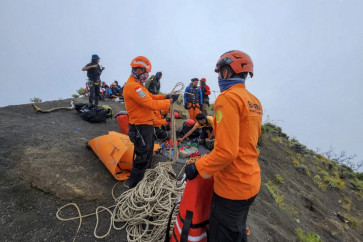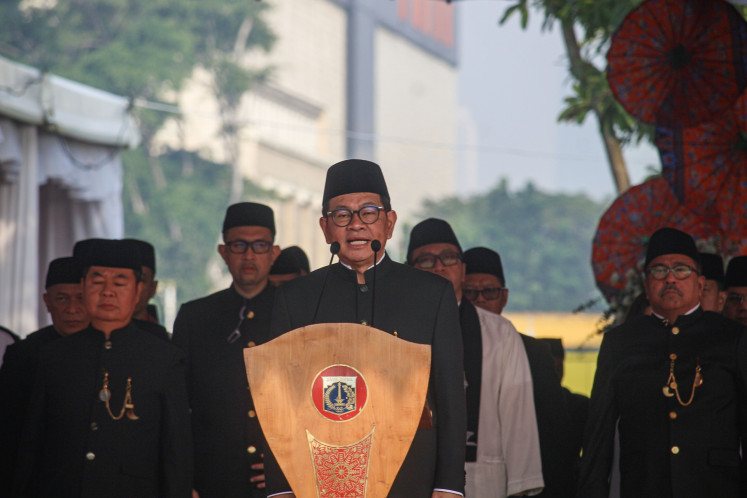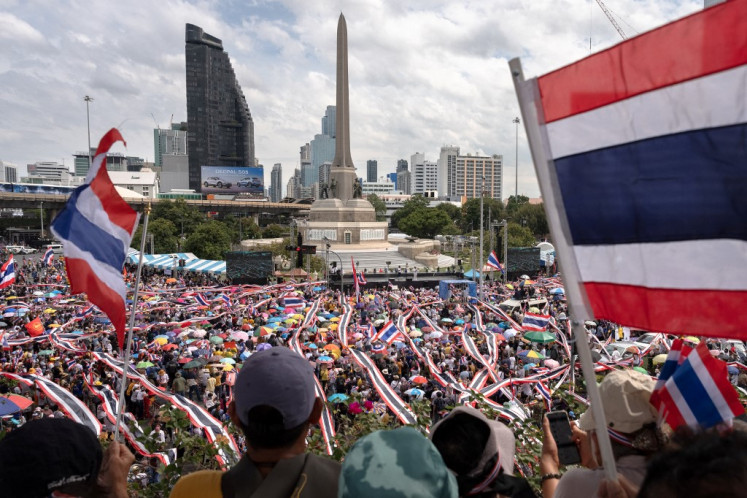Popular Reads
Top Results
Can't find what you're looking for?
View all search resultsPopular Reads
Top Results
Can't find what you're looking for?
View all search resultsUrban chat: Labengki-Sombori: Sulawesi's answer to Raja Ampat
Unless you’ve been living under a rock, you’ll have heard of Raja Ampat — the ultimate jewel of Papua that has been featured in multiple documentaries and travel stories
Change text size
Gift Premium Articles
to Anyone

U
nless you’ve been living under a rock, you’ll have heard of Raja Ampat — the ultimate jewel of Papua that has been featured in multiple documentaries and travel stories. It’s reportedly so breathtaking that every other nature adventure in Indonesia pales in comparison.
While I’m saving Raja Ampat for last, it was hard to resist the temptation of Labengki and Sombori islands in Sulawesi, which many people have likened to Raja Ampat. I decided to take my chance last weekend.
For a relatively remote patch of Indonesia the journey wasn’t that bad. After landing in Southeast Sulawesi’s capital Kendari we drove shortly through the mountains to a small pier, where a speedboat was waiting to take us on the one hour ride to Labengki Besar Island. The journey was quicker and simpler than the 4-leg, 15-hour trip to reach Maluku’s famed Ora Beach, and less challenging than going to East Nusa Tenggara’s Lembata Island.
And yet, as we started to island hop it was clear how underdeveloped the region is, for tourists and locals alike. The small islands are only connected by boats, and speedboats seem to be a luxury reserved for successful fishermen and tour operators. The rest of the islanders rely on motor powered wooden boats known as perahu klotok, which take up to three times as long as a speedboat and cannot weather big waves let alone storms.
Junior high schools and community health centers (Puskesmas) are only available on certain islands, so imagine how difficult it is for pupils and sick people during the rainy season, when the sea is often impassable. There’s no cellular signal, and no chance of getting hold of sugar or feminine products after nightfall as the nearest grocery store is a couple of islands away.
Two days after I returned to Jakarta I read there were only two regencies in Indonesia that failed to conduct regional elections as a result of logistics problems, and it was no surprise that one of them was in this region I’d just visited.
Are the islands gorgeous? No argument there. Uninhabited white sandy beaches with lush trees are easy to spot and dock at, while under the water you can find lovely reefs, interesting walls and plenty of starfish. There are stalagmite-filled and bat-inhabited caves, lagoons and rocky hills with views that made me understand the Raja Ampat comparison.
Unless you want to board with the locals, two proper lodgings are available on Labengki Besar — one on a sandy beach and one on a rocky cove with a flying fox facility I sadly didn’t get to use.
Also interesting is the involvement of locals in the growing tourist industry there. While Labengki is in Southeast Sulawesi, Sombori Island is part of Central Sulawesi’s Morowali regency, and yet both areas are sold as one tourist destination.
The morning we went to Sombori, our first stop was the fishermen’s village Mbopita, where our tour guide gave a visitation report to the village chief and picked up a local guide. The local guide proved very handy as our group trekked up sharp-edged boulders and teetering on slippery wooden planks connected to whatever terrain was on the other side.
A visitation fee or “donation” had to be paid to the village, as well as a tip for the assigned local guide, so the local economy benefits from the tourism. If this kind of collaboration can be maintained and expanded as the tourism grows, surely better days are ahead for the islanders of Labengki and Sombori.
Yet education, including on the environment, must be provided to locals and tourists before the impending tourism boom. I hate to report that despite being remote, Air Kiri beach and Puncak Kahyangan peak are already littered with plastic waste.
Upon seeing my travel mate Lailai picking up plastic trash along the way, our tour leader told us about foreign eco-divers who recently combed through that part of Sulawesi’s waters for discarded plastic items — which made me cringe to think how much more plastic trash there was at Indonesia’s more popular tourist destinations.
The tour operator I went with, Kakaban Trip, asked us to bring our own refillable water bottles, and didn’t pack our lunches in polystyrene boxes, but how many tour groups are that environmentally conscious? In fact, Lailai even saw one of the hired boatmen casually throwing a plastic bag into the sea as the speedboat raced the afternoon tide.
“Never tire of loving your Indonesia” is the phrase I distinctively remember Sri Mulyani Indrawati uttering before leaving for her World Bank job. And the more I explore far-flung corners of Indonesia, the more I’m reminded of that phrase. So much potential, yet so many problems. But travel further I shall, as I hope you English-reading Indonesians will, for we all need to get out of our often Java-centric mindset to advance the rest of Indonesia.
Before you head to Raja Ampat, you can start with Labengki and Sombori.
— Lynda Ibrahim is a Jakarta-based writer with a penchant for purple, pussycats and pop culture.









